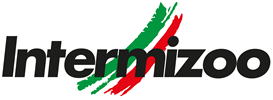Bull Sheet Key
Bull’s Details
Acronym
Description
NAAB
Coding system for Semen Identification that includes:
- Identification of the source of the semen (the organization that produced and/or processed the semen);
- Identification of the breed of the bull;
- Identification of the respective bull.
aAa®
Evaluation system that studies and analyzes all the part of bulls and cows in order to describe:
- The qualities the bull brings to a mating;
- The qualities the cow needs.
The best match is composed by a bull and a cow with the same aAa® number.
Italian Indeces
Acronym
Description
PFT
Italian Selection Index which combines production, functionality and type.
IES
Italian Economical Selection Index which highlights productive and healthy animals.
ICS-PR
Italian Economical Selection Index which maximize income for the cheese making process.
Logos
Acronym
Description
A2A2
Genotype A2A2 Beta-casein carrier.
HH Free
Not carrier of Holstein haplotypes. HH are involved in the reproductive efficiency of the herd.
Grazing
Grazing Index higher than 106.
Income
High IES and ICS-PR indeces.
Electa
Sexed Semen available.
Pro Caseus
Pro Caseus Index (Cheese Making Aptitude) higher than 106.
Ok Robot
Udder suitable for Robot Milking.
Automated Milking Index (IMA) higher than 106.
Calving Ease
Calving Ease Index higher than 106.
Production
Index
Description
MILK
Estimated milk produced more than the population average (population average is 0).
Pr.% – Gr. %
Estimated fat and protein percentages produced more than the population average (population average is 0).
Pr.Kg e Gr.Kg
Estimated kg of fat and protein produced more than the population average (population average is 0).
Daughters
The bull’s daughters having their milk data recorded, in order to calculate the bull’s index.
Herds
Number of registered farms in which there are daughters of the bull.
Rel. %
In statistics, the overall consistency of a measure.
Milk quality
Index
Description
K-Casein
K-Casein Genotype: AA, BB, EE, AB, AE, BE.
Beta-Casein
Beta – Casein Genotype: A1A1, A2A2 o A1A2
B-Lactoglobulin
B-Lactoglobulin genotype: AA, BB, AB.
Pro Caseus
Genomic Index for Cheese-Making Aptitude – Pro Caseus®.
Functional Traits
Index
Description
Sire Calving Ease
The index describes a sire’s ability to produce a calf that is born easily.
Daughter Calving Ease
The index describes the daughters’ ability to produce a calf that is born easily.
Milking Speed
The index describes the milking speed of bull’s daughters.
SCS
The index describes the somatic cell score of bull’s daughters. It measures a bull’s milking daughter’s susceptibility to mastitis.
Udder Health
The index describes the bull’s daughters’ genetic ability to resist mastitis.
Longevity
The index refers to the number of lactations of a cow, before exit the herd due to insufficient productivity.
Fertility
The index is composed by 8 sub-indexes with the aim to improve the fertility rate.
Feed Efficiency Index (PFE)
The index describes the amount of feed (dry matter) required to produce one kg of milk.
BCS
The index describes if bull’s daughters can maintain a good level of fat reserves during various production phases.
Grazing
The index describes how much bull’s daughters are suitable for grazing system and extensive farming.
The Grazing Index is calculated by Intermizoo in partnership with University of Padua.
Automated Milking Index
The index describes how much bull’s daughters are suitable for robot milking.
Heat Tolerance Index
The index describes the ability of cows to resist to high temperature and humidity (THI).
Linear Traits
Index
Description
Type
The type index derives from 17 indices based on linear morphological traits.
Udder Comp. (ICM)
The goal of ICM index is to breed for a functional udder. Its formula is based on the linear scores of the udder.
Feet & Legs Comp. (IAP)
The IAP index combines indices based on linear traits relative to feet and legs and locomotion.
Rel.%
In statistics, the overall consistency of a measure.
Stature
Highest point of rump line between points of hips.
Strength
Distance between fore legs.
Body depth
Depth, corresponding to last rib.
Dairy form
Angle and openness of chest, combined with quality of the skeleton.
Rump angle
Angle between joining line of hip and pin bone and line parallel to ground corresponding to hip bone.
Thurl width
Distance between points of pins.
Conformation
Reference to breed standards feet & legs and mammary non included.
Rear leg set
Angle of hock fore profile.
Rear leg view
Alignment of feet and legs (rear view).
Foot angle
Distance of soft tissues from ground.
Locomotion
Length of step and direction of rear legs (in movement).
Fore attachment
Strength of attachment to the abdominal wall.
Rear att. height
Position with regard to average point between pin bone and hock.
Rear att. width
Measured at the height point.
Udder cleft
The depth of cleft, measured at the base of the rear udder.
Udder depth
Distance of the udder floor to the hock.
Front teat plmt.
Placement of teats with regard to centre of quarters.
Rear teat plmt.
Placement of teats with regard to centre of quarters.
Teat Lenght
Length of fore teats.
International Indeces
Index
Description
TPI
Most important U.S. selection index which combines production, health and conformation.
Net Merit
U.S. selection index which predicts net profit over the lifetime of the animal’s average daughter, expressed in U.S. dollars.

